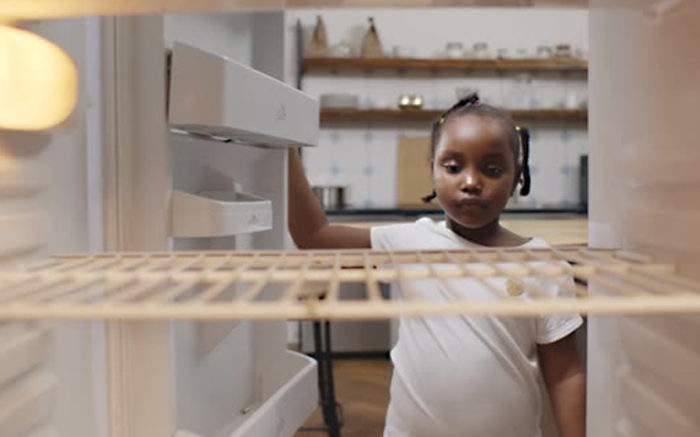Ambar Castillo | Washington City Paper
Young D.C. residents who dealt with food and housing insecurity during the pandemic are still dealing with the consequences, even when more resources are available.
Long before the start of Fall 2021 classes were on anyone’s radar, caretakers, teachers, and other adults in children’s lives already had reason to fear that the kids were not alright. In D.C., food insecurity and housing instability, in addition to disruptions from their routines, the longtime isolation from peers, and the loss or illness of family members due to COVID-19, meant children’s mental health was in a precarious place during this formative time in their development. The return to in-person classes—and subsequent high number of quarantines due to potential COVID-19 exposure that has marked the start of schools—didn’t help the problem.
Dr. Stacy Cary-Thompson, a D.C.-based pediatrician who has seen patients in person throughout the pandemic, points out that child abuse has surged during the pandemic, partly due to such overlapping issues of insecurity. Child abuse has a significant correlation with mental illness and is something she, as a pediatrician, constantly has on her mind.
“Parents and other caregivers are stressed during COVID,” she says. “Their support networks have shrunken, [and] … there have been changes to job and financial security. And children feel the effects of this. And so certainly there can be changes in family dynamics that the children witness, but also the pressure of the changes can manifest in a violent way.”
Housing Instability: Not Just a Home Issue for Students
“D.C. is a very special place in the sense that … a lot of what’s happening in the streets and in the homes often pours into the schools,” Sam P. K. Collins of The Washington Informer said during a “World in Black” virtual roundtable discussion on education Wednesday. “When students come in … they’re suffering from homelessness, they’re suffering from mental health issues, things that manifest in low grades and low educational attainment.” This is particularly the case in communities located east of the Anacostia River, Collins points out.
Housing insecurity isn’t just the typical picture we have of homelessness, Alexis Taylor, a teacher and contributing writer for the Baltimore Afro American, reminded folks at the same panel.
“Homeless doesn’t always mean that you’re on the street,” she said. “Homeless can mean that you’re bouncing from couch to couch each night, homeless could mean that sometimes you’re sleeping with a cousin at their house, and then other times with a family friend, so it’s not stable housing.”
Along with housing insecurity, food insecurity is one of the top factors that has contributed to a “twin pandemic” of COVID and systemic racism and inequality, both nationally and in the District. Caregivers at the Grow Clinic at Boston Medical Center reported that the number of children they see for “failure to thrive” due to malnutrition rose by 40 percent during the pandemic. New patients were in more critical condition than pre-pandemic and an unusual number of “graduated” patients were returning for the same issue. In D.C., the Capital Area Food Bank’s 2021 hunger report showed large spikes of food insecurity among Black and Latino households.
Particularly early on in the pandemic, with supply chains disrupted and supermarket shelves left bare, many families couldn’t get the food they needed during this critical period in children’s growth. Many folks, having lost their job or left their job due to COVID-related health concerns, struggled to put food on the table. With schools closed, school meals were no longer a food source on which low-income families with children could rely. Some families lost their SNAP benefits once the pandemic boost in unemployment benefits kicked in. Now that some pandemic unemployment benefits have ended, the city has been pushing for folks to apply or reapply for resources like SNAP.
But even now, with food supplies mostly restored and social service programs and community support helping fill the gaps for some families, children impacted aren’t left unscarred: For developing brains, even short-lived moments of food deprivation can contribute to social-emotional and behavioral problems, apart from other ailments. A BMC study published in late March of 2714 low-income families nationwide found that food insecurity was highly associated with anxiety and depression during the pandemic—it posed three times the risk of developing mental illness as that of losing a job. And researchers found that SNAP, unemployment benefits, and stimulus payments weren’t associated with a reduced risk of mental illness.
When schools closed last March, Crittenton Services of Greater Washington conducted a needs assessment of the roughly 500 sixth- to 12th-grade girls the organization serves annually, finding that these teens were already experiencing food insecurity. The nonprofit, which partners with schools to deliver social-emotional learning and academic success programs for teen girls, was one of various organizations that stepped in to help fill the gap, helping more than 450 families in the DMV secure food and other essentials at the peak of the pandemic.
